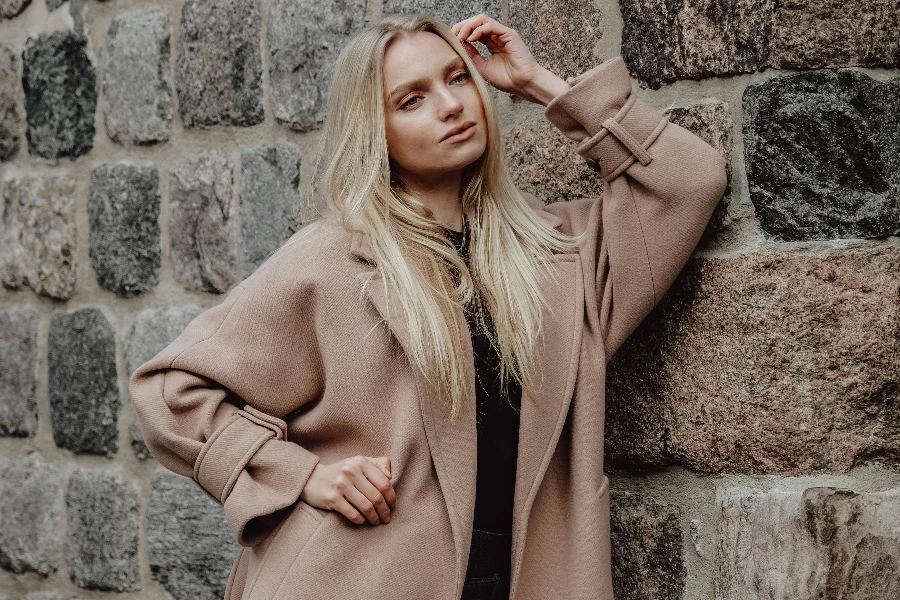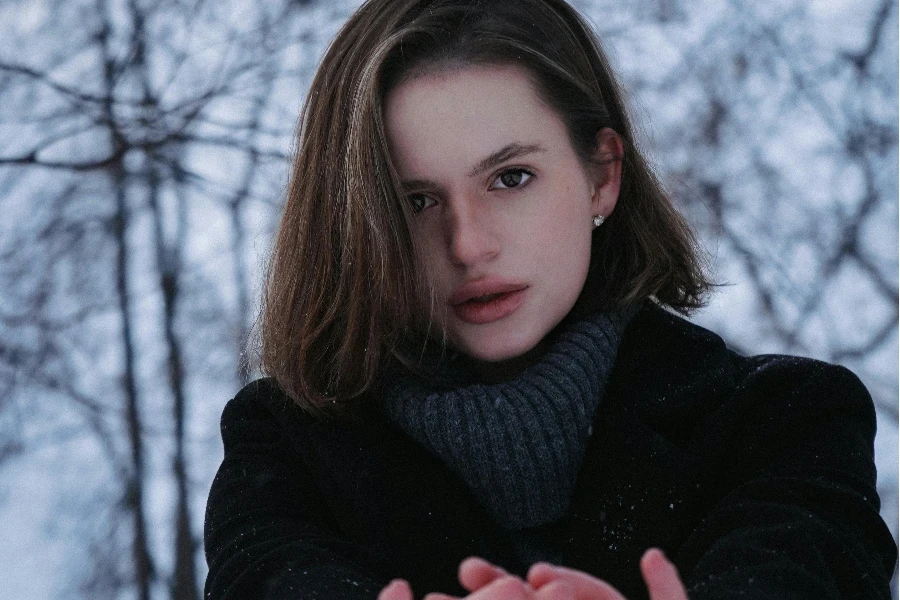As wool coats continue to dominate the outerwear market, retailers face an exciting opportunity to cater to growing consumer demand for both style and sustainability. With advancements in fabric technology, evolving trends, and a focus on eco-friendly materials, wool coats are becoming a must-have item for every wardrobe. This article explores the market trends, the latest styles, the most sought-after types of wool, and the essential features that make a wool coat stand out. Whether customers are looking for timeless sophistication or modern versatility, understanding these trends will ensure that your inventory remains relevant and in-demand this season.
Table of Contents:
– Market Overview
– Top Players in the Wool Coat Market
– Exploring Trendy types of Wool Coats
– Tips on Choosing the Right Wool Coat
– Sustainability of Wool Coats and Future Looks
– Conclusion
Market Overview

The wool coat market has experienced steady growth in recent years, driven by consumers’ growing demand for sustainable, durable, and stylish outerwear. According to a report by Statista, in 2022, the global coats and jackets market was valued at over 100 billion U.S. dollars, with the men’s and women’s segments each accounting for approximately 44 billion dollars, and the remainder attributed to the children’s segment. Asia-Pacific, led by China, dominates the market, generating $18 billion in coat and jacket sales, followed by the United States at $13.9 billion.
Within this broader market, the luxury outerwear segment, which includes premium wool coats, was valued at $15.7 billion in 2022, with projections indicating an additional $6 billion in growth by 2027. This trend highlights the increasing preference for high-quality, durable outerwear.
Several factors are driving this shift, including a growing awareness of wool’s natural insulating properties and its eco-friendly advantages over synthetic materials. Wool’s breathability, moisture-wicking qualities, and temperature regulation make it particularly appealing for colder climates. Meanwhile, fashion trends continue to favor timeless, tailored designs. Wool coat manufacturers are also innovating with wool blends to enhance comfort, texture, and durability, making them suitable for a variety of occasions.
Top Players in the Wool Coat Market

Several key players dominate the wool coat market, including VF Corporation and Moncler. VF Corporation, known for brands like The North Face and Napapijri, generated over $5.3 billion in 2022 from its outdoor segment. Moncler, a luxury outerwear brand, reported revenues exceeding €2 billion in 2021, underscoring the importance of high-end brands in the wool coat segment.
The UK, with over 21.2 million sheep producing around 72,000 tons of wool in 2023, remains a significant player in wool production. Despite a dip in export values, the UK wool market has shown signs of recovery since 2021, indicating resilient demand.
Exploring trendy types of Wool Coats

The Peacoat is a classic double-breasted style, traditionally worn by sailors but now a staple in casual and semi-formal menswear. Made from thick wool, it provides substantial warmth and structure, making it perfect for chilly weather. Its close-fitting design and strong, broad shoulders add a masculine touch, while its versatility allows it to be paired with everything from jeans to dress trousers.
The Overcoat is a longer and more formal coat, often worn in colder climates and ideal for formal business settings. Made with high-quality wool, overcoats are known for their elegance and craftsmanship. These coats typically feature a single-breasted or double-breasted design and can be worn over a suit or a more casual outfit. The length of the coat often reaches mid-thigh or just above the knee, providing both warmth and a flattering silhouette. Overcoats are popular among both men and women, and in recent seasons, they have been updated with oversized cuts and modern tailoring for a contemporary twist on a traditional garment.
The Chesterfield Coat, with its slim, tailored fit and single-breasted design, is another formal option. Originating in the 19th century, it has become synonymous with high fashion and business wear. The coat’s most defining features include a velvet collar and a smooth, clean design. Typically crafted from a fine wool fabric, Chesterfield coats are ideal for wear in the office or at formal events, providing a sleek and professional look that never goes out of style.
Other styles include the Duffle Coat, with its toggle fastenings and relaxed fit, and the Trench Coat, which is made from a wool-blend fabric for a lighter, water-resistant option. Both of these coats have seen resurgence in recent years as consumers seek functional yet stylish outerwear. The Duffle Coat is ideal for casual outings and urban wear, while the Trench Coat, with its longer silhouette, is great for layering over formal or smart-casual ensembles.
Tips on Choosing the Right Wool Coat

One of the first considerations should be the fit. A wool coat should not be too tight, as this limits mobility, nor too loose, as this can reduce its effectiveness in insulating warmth. When trying on coats, make sure that the shoulders fit well and that there’s enough room for layering underneath. For a tailored look, consider a single-breasted design, while double-breasted options provide a more structured fit, making them ideal for formal wear.
Material composition is another crucial element. Pure wool is the most traditional choice and provides the best insulation, but it can sometimes be too heavy or stiff for some wearers. Wool-blend options, which combine wool with synthetic fibers such as polyester, can offer more flexibility, resistance to wrinkles, and enhanced durability without compromising too much on warmth. For those seeking extra comfort, some coats incorporate cashmere or alpaca wool, which adds softness and luxury to the fabric while still retaining the insulating properties of wool.
Finally, consider the coat’s intended purpose. For outdoor wear in extreme cold, heavier styles like the Peacoat or Overcoat are great choices due to their thicker wool fabrics and longer length, which provide greater warmth. On the other hand, a lighter wool trench coat is more suited to milder climates or as a stylish layering piece during the fall or early winter months. Retailers should also think about the preferences of their target customers—some may prioritize style, while others may be more concerned with comfort or functionality. Therefore, offering a diverse range of wool coats in various cuts, colors, and weights is key to appealing to a broad audience.
Sustainability of Wool Coats and Future Looks

As a natural fiber, wool is biodegradable, renewable, and requires minimal water and pesticides compared to other fibers such as cotton. One of the key sustainability trends in the wool coat market is the rise of responsible wool sourcing. The Responsible Wool Standard (RWS) is a certification that ensures wool comes from farms that prioritize animal welfare, land management, and biodiversity. According to the Global Fashion Agenda, 17% of global wool production was certified under RWS in 2023, and this number is expected to grow as consumers become more aware of the impact of their purchases. This aligns with a broader trend towards circular fashion, where retailers focus on products that are designed to be reused, recycled, or upcycled at the end of their lifecycle.
Wool also plays a key role in reducing the environmental footprint of outerwear due to its durability. Wool coats, if well-maintained, can last for several years, unlike synthetic coats that often degrade quicker and end up in landfills. According to a report by McKinsey & Company, the average consumer keeps a wool garment for 4-5 years, which is 1.5 times longer than synthetic fiber garments. This longer lifespan significantly reduces the overall environmental impact of the garment.
Looking to the future, innovations in wool blends are shaping the next generation of wool coats. For example, companies are experimenting with blends of wool and recycled polyester or nylon, which can offer greater durability and water resistance without sacrificing the natural benefits of wool. Other innovative fabric technologies, such as merino wool performance fabrics, are combining the softness and breathability of merino wool with modern performance attributes like moisture-wicking and temperature regulation. These fabrics make wool coats more adaptable for different seasons, extending their appeal beyond winter months. As consumer demand for high-performance, multi-functional outerwear continues to rise, these new wool technologies are expected to play a significant role in the market.
Conclusion
Wool coats remain a staple in the outerwear market, combining style, durability, and warmth. As trends continue to evolve, retailers must stay on top of the latest wool coat styles and materials to meet the growing demand. Whether customers are looking for timeless classics like the Peacoat or Overcoat, or more contemporary choices like the Duffle or Trench Coat, there’s a wool coat to suit every need. Understanding the nuances of different types, fits, and materials will allow retailers to make informed purchasing decisions that will not only appeal to their customers but also ensure long-term sales success in the competitive outerwear market.




